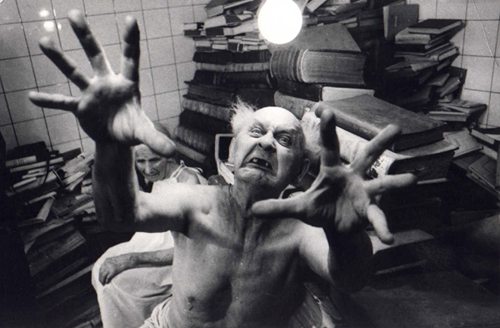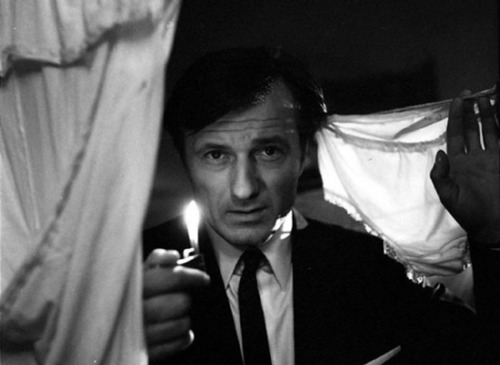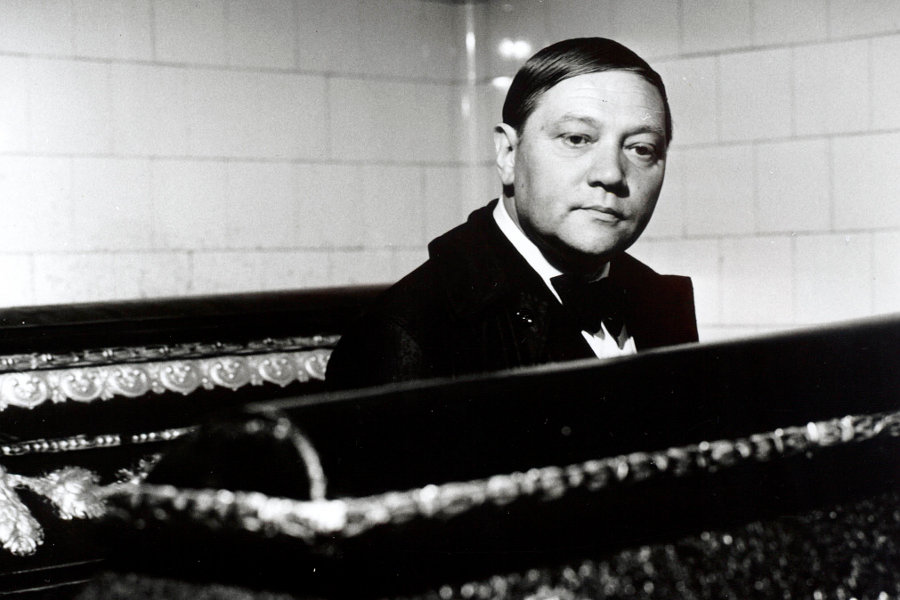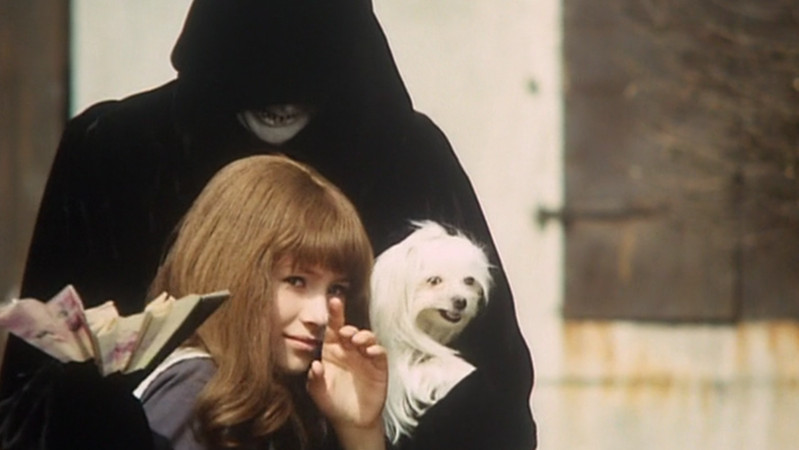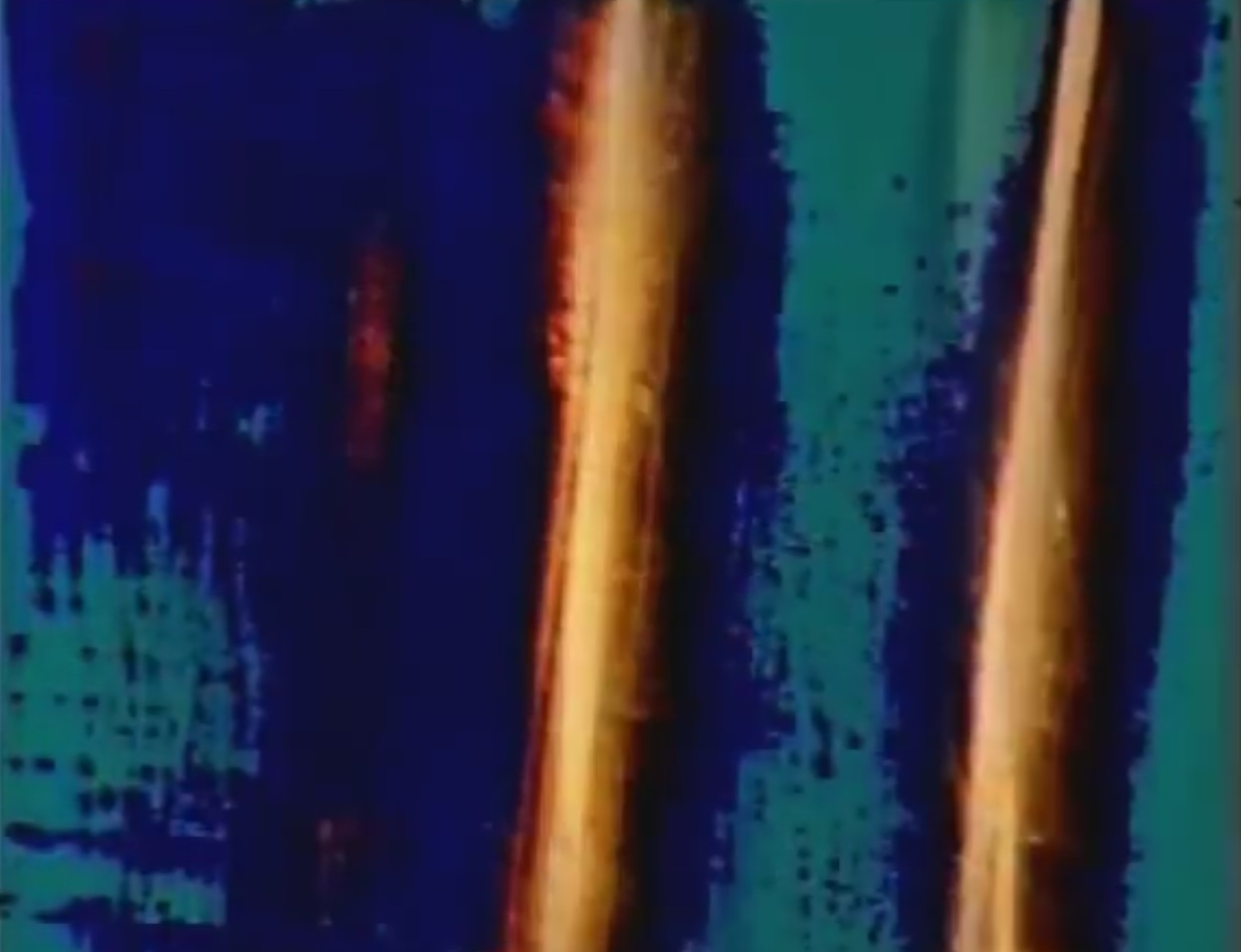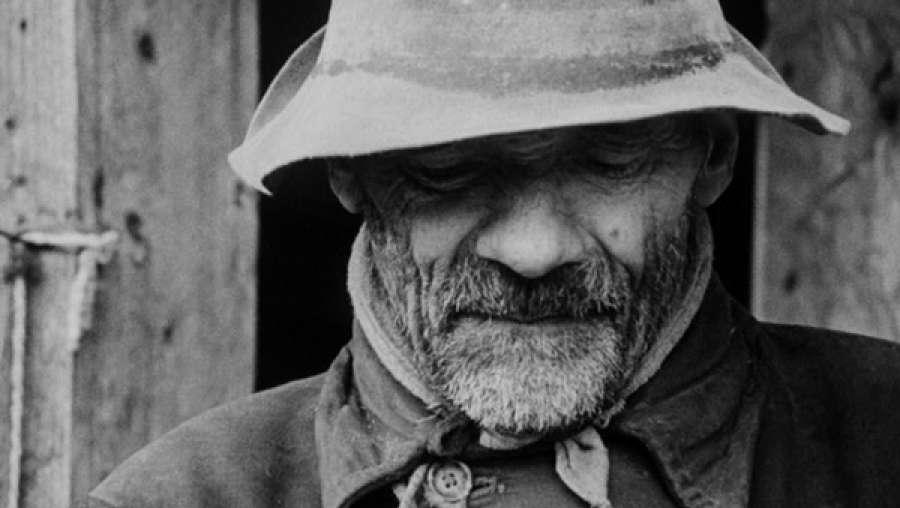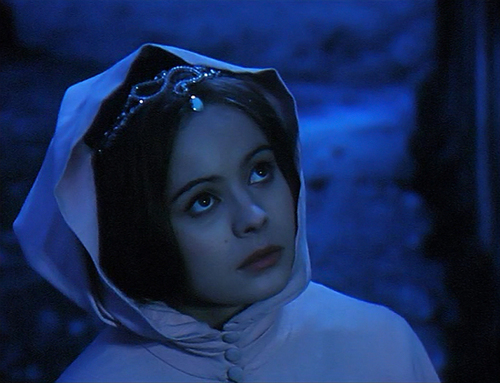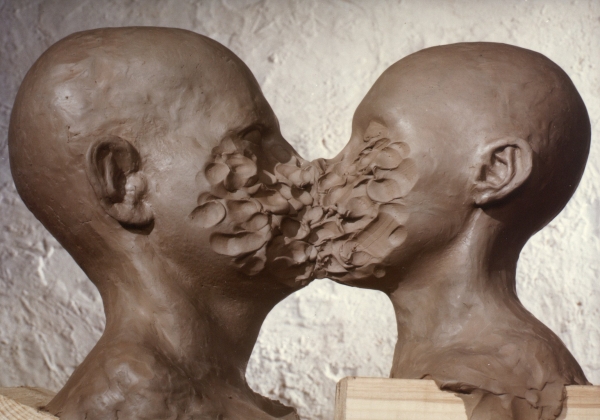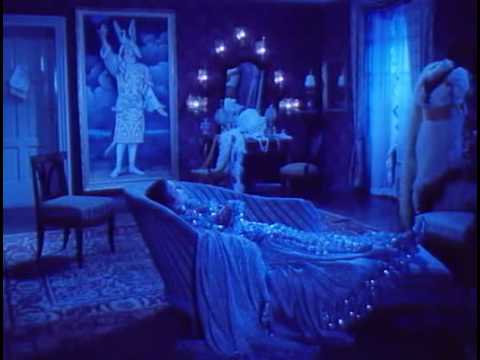18. The Deserter and the Nomads (1968). Dir. by Juraj Jakubisko
Even among the zaniest visionaries of Czechoslovak cinema Juraj Jakubisko stand out for his utter idiosyncrasy. Probably the greatest Slovak director ever, he is a surrealist to the core, and his films are the testament to his unique ability to think in unforgettable imagery. This film is uneven at times content-wise, but many images will stay with you forever. Death is the main protagonist here, and with it we journey through three World Wars.
World War I episode is about a deserting gypsy soldier, who makes his way back to his colorful and crazy village, where, after much screwball, Kusturica-worthy comedy, he is shot at the wedding. WWII part is grim and violent, the whole village is shot to the last man, woman, and child, including an itinerant egg salesman accused of espionage.
In the post-apocalyptic third part, an old man and a young girl travel among the rubble of civilizations gone. Jakubisko utilizes every camera trick and color machination to support his vision and create that rarity of rarities-an experimental epic.
19. The Ear (1969). Dir. by Karel Kachyna
A minimalist feast. Kafka meets Albee in this claustrophobic thriller. The main hero, Ludvik, is a Communist party official. Strange things begin to occur when he and his wife return from an official event. Lights go off, phone dies, there are suspicious figures outside. Small wonder that they come to conclusion that Ludvik’s arrest is imminent, resulting in an interesting night.
The dialogues are similar to those of Who’s Afraid of Virginia Wolf?, but the style is literally a textbook on how to make a film in a confined space. This is a horror thriller where almost nothing really happens, but every minute of which is suspenseful and fascinating to watch.
20. The Cremator (1969). Dir. by Juraj Herz
A darkest comedy imaginable and a fascinatingly tragic study of human nature, this one could have been easily made by Kafka in one of his most humorous moment. Also in the running for the most striking film on this list, its style of rapid shot switches and fluid camera angle play perfectly supports its main content-the moral ambiguity.
Its main hero is the crematorium employee, whose job is to burn the dead. He is an example of a smug bourgeois, eager to succeed in life and to shake the stigma of his profession. The Nazi occupation brings him considerably more business, but also creates the nagging dilemma of his Jewish wife and half-Jewish children, which he feels now impede his progress.
The resolution is unexpected, but we know how he got there-by being able to rationalize the horror and achieve moral flexibility. This adaptation of Ladislas Fuchs novella is greatly strengthened by its visual and aural brilliance. Some scenes-the one in the wax museum, and the extermination of cats one-will haunt you for a long time to come, as will this masterpiece overall.
21. Valerie and Her Week of Wonders (1970). Dir. by Jaromil Jires
Genre cinema was a sort of exile for Jires. During the heyday of the New Wave, he made contemporary films like The Cry and the adaptation of Kundera’s The Joke. When Soviet tanks rolled in, he had to make different kind of cinema. It’s somewhat a gain for us the viewers, as Valerie is one of the most visual and memorable films of all time.
It’s a horror, coming-of-age, and fantasy all rolled into one striking package, a sort of Alice in Wonderland on acid. As the titular heroine reaches puberty, she is given a pair of magical earrings that transport her into a wild and at times really scary world. Her family members reappear as witches, weasels, vampires, and other assorted Goth riff-raff.
The film is presented as sort of a series of Valerie’s bizarre dreams, as she transitions from a girl into a woman. Although the story gets really lost at times, the imagery never lets down, and it’s augmented by a phenomenally evocative and haunting score. The upcoming Criterion treatment is well-deserved.
22. Dies Irae (1972)/Insane Light (1973) and the overall cinema of Petr Skala
Alchemy, music, and mathematics combine effortlessly in Petr Skala’s works. During that time, the West saw an explosion of underground cinema, with Stan Brakhage, Norman McLaren, Stan Vanderbeek, Robert Breer, and other visionaries exploring the possibility of film itself, often by painting and scratching directly on it.
What’s astonishing about Skala is that he had to conduct his experiments in a growingly oppressive and stifling atmosphere, where the very fact of someone doing something unsanctioned is a slap in the face of the system.
Working with discarded blank or exposed 16mm film, store-bought dyes, and a magnifying glass, he created something that’s between engraving and sculpture, and proceeded to further the experiments with things like dishwashing sand, cigarette lighter fluid, honey, acetone, hairsprays, and glues, to end up with something that can only be called post-cinema.
In Dies Irae, he evokes the feeling of radiance, akin to sunlight falling through Kandinsky-painted stained glass, while in Insane Lights, the said light appears to shine through the gashes of the universe. Most of those and other Skala films run 2-3 minute each, so watch them with lights out-and don’t blink. It’s worth it.
23. Pictures of an Old World (1972, rel. 1988). Dir. by Dusan Hanak
A documentary that is more entertaining than most dramas. The Slovakian director was always suspected of subversion by the Communist regime, and this film was shelved for over 15 years. He sought to escape control by filming at the margins of society. Here, he trains his camera on the elderly inhabitants of a remote Slovak village. He focuses on their aged bodies, bygone teeth, and baked-potato-like faces, and lets them tell their stories. Many fascinating truths begin to emerge.
While at first glance they all look very similar, their varied walks in life and experiences made each of them a unique human being. Hidden talents begin to emerge-one is naturally gifted in languages, another makes original and fascinating toys, etc. Hanak obviously gained their trust, for they appear completely uninhibited as they tell their stories in inimitable ways.
And he doesn’t forget to sprinkle the film with details of his protagonists surrounding, the location itself and their belongings add to the experience. More than a documentary-a superb study on life itself.
24. Three Wishes for Cinderella (1973). Dir. by Vaclav Vorlicek
This Czechoslovak/East German co-production remains a Christmas staple in Eastern and Central Europe, in no small part thanks to its stunning and gorgeous look. It also helps that the titular heroine is probably in the top 5 of ALL cinema adorability-wise. The luminous Libuse Safrankova portrays the very different Cinderella-a spunky and proactive one, the kind that doesn’t need a Fairy Godmother of any kind, and who actually is the one pursuing the prince.
This Cinderella doesn’t arrive to the royal ball in a carriage, but gallops in atop a steed. She can nail you with a snowball at 30 feet and is probably the best archer in the kingdom. Besides the talking owl and other vocal animals, the only magic comes from three hazelnuts that Cinderella opens at opportune times to get some magical assistance.
But when it comes to looks, this film is pure magic. The snowy forest landscapes caress the eye, and the colorful costumes and palace setting have an effect of a rainbow in the dead of winter. The merry and affecting music adds to this unforgettable fairy tale experience and provides additional merriment to the millions of Czech, German, and other children who view it every year.
25. Dimensions of Dialogue (1982). Dir. by Jan Svankmajer
How does one make a trilogy of films about dialogue and communication without ANY dialogue and in 10 minutes of total running time? Only Svankmajer knows. The great Czech animator and visualist achieved further international acclaim with this short animated epic. First part, Factual Discussion, shows three Arcimboldo-inspired heads, made of food, kitchen utensils, and office supplies, respectively, consume and pulverize each other into identical clay human forms.
Second, Passionate Discussion, shows a clay man and woman make passionate love, but tear each other apart later when unable to deal with the byproduct of their passion.
Finally, Exhaustive Discussion shows two heads that begin by working in harmony (one produces and object and the other-a matching one), but then utterly exhausting each other by disharmony and misunderstanding. The animation is astonishing, and the themes explored will make you think for days. After being suppressed by the ruling regime, Svankmajer returns triumphantly to artistic greatness.
26. The Mysterious Castle in the Carpathians (1983). Dir. by Oldrich Lipsky
Lipsky returns to form after the stunning success of Lemonade Joe and years of being in the official doghouse. Aided by humorist Jiri Brdecka and the legendary animator Jan Svankmajer (see #25), he creates yet another colorful universe. This film deserves to be way better known in the West, particularly among the Steampunk aficionados (indeed, it’s an adaptation of one of Jules Verne’s lesser-known novels).
The hero, an opera singer with a magical voice, goes to the country to try to forget the tragic loss of his fiancée. Upon hearing her voice, he stumbles into the warped world of the castle. This isn’t the impersonal and oppressive Kafka castle, but a mysterious laboratory of strange and wonderful things.
Ruled by an evil and possessive baron and his assistant (both of whom can give ZZ Top a run for their money in the beard department), it’s where a captive professor creates novelties and curios for the baron, and sends rockets to the moon in his free time. These novelties include cinema, CCTV, and perhaps world’s first recording studio.
Every nook and cranny in this monumental circus teems with life of its own, every detail catches the eye and adds to the kaleidoscope of experience. Even the color stock of the film undergoes numerous tint treatments to underscore the hilarious theatricality of this palatial circus.
